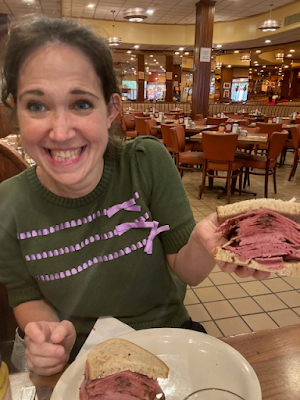[Editor’s note: “Six Questions for…” is a new feature we’re going to be giving a test run for the next few weeks. The idea is to go beyond the usual tiny author’s bio and give readers a better sense of who our authors are. If you think of a question you’d like us to ask, feel free to put it in the comments. We can’t guarantee the author will answer, but we’ll put it on the list of questions to ask in future profiles.]
Six Questions for… Karin Terebessy
Karin Terebessy likes to write speculative flash fiction stories. Her work has appeared in Daily Science Fiction, Stupefying Stories, Flash Fiction Magazine, Sci-Phi Journal, and other ‘zines. She is currently attempting to write a novel based on her short story “Mood Skin” which appeared in Stupefying Stories in 2016. You can follow Karin on TikTok @karinbendsreality or find her on Instagram at karinterebessy.
Her previous appearances in our pages include “The Memory of Worms,” in the now out-of-print Stupefying Stories 16, as well as SHOWCASE stories: “Robin’s Egg,” “Not Quite Ready for Armageddon,” “The Finder of Lost Things,” “Mood Skin,” and “The Real Reason Why Mrs. Sprague Came by Her House So Cheaply”
[Another Editor’s Note:Though we’ve been publishing Karin’s stories for years, this profile is actually the first time we’ve ever seen her. Karin writes:
“I don’t usually include photos with any of my stuff (mainly because I’m a mom so there are exactly three and a half photos of me in existence from the past fifteen years) but this is one of the more recent ones and I’d like to include it.
“They say a picture is worth a thousand words. This is me reacting to the size of the pastrami-corned beef combo sandwich I got at Juniors in Brooklyn. The fact that I couldn’t decide on pastrami OR corned beef and went with the waiter's suggestion of just having both says a lot about me too, I think. That I totally I finished it and then got dessert probably speaks volumes…”]
I’m also a big fan of Etgar Keret. He’s not hurting for followers, but his books are hard to find, and I don’t hear many writers discussing him. He is the most gifted flash fiction slipstream author I have ever read.
“Mood Skin promised to usher the next generation into a compassionate phase of humanity. Administered in utero, babies emerged expressing their feelings in a hue of colors allowing adults to equip children with emotional self-awareness. The Mood Skin generation grew up in a world that nearly eradicated school shootings, teen suicide, depression and anxiety. Guaranteed to fade by age seven, Mood Skin was a success. Of course, in a small percentage of cases there were side effects like albinism, hyperpigmentation, or scars. In the rarest cases, some children never outgrew their mood skin at all.
“Now, twenty years later, Bell Academy boasts the largest percentage of Affected students of any high school in the country. Colin, Simon, and Bai Li all live with albinism. Along with their friends Jethro, who lives with hypopigmentation, and Sarah, scarred with mood skin, this tight knit group of teens navigate friendship, romance, activism, bullies, and a society that doesn’t know what to do with them. When the charming and talkative Colin meets the new girl Ari, a Kinetic Moodie who can not speak but communicates through her colorful skin, it just might be love. But every teen’s life has its struggles. In a society constantly striving to do better, what happens to the “collateral damage” of previous attempts? Will love and friendship be enough to survive the bullying, attacks, and reports of Affected teens dying?”



















2 comments:
Dove into "Mood Skin" as soon as I finished this interview. Good work. Ambitious novel project with tons of potential.
That’s really generous of you, thank you.
Post a Comment